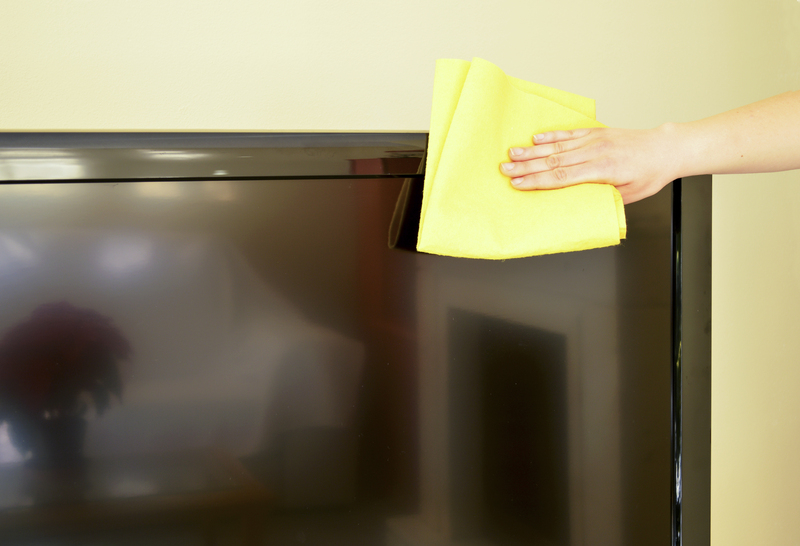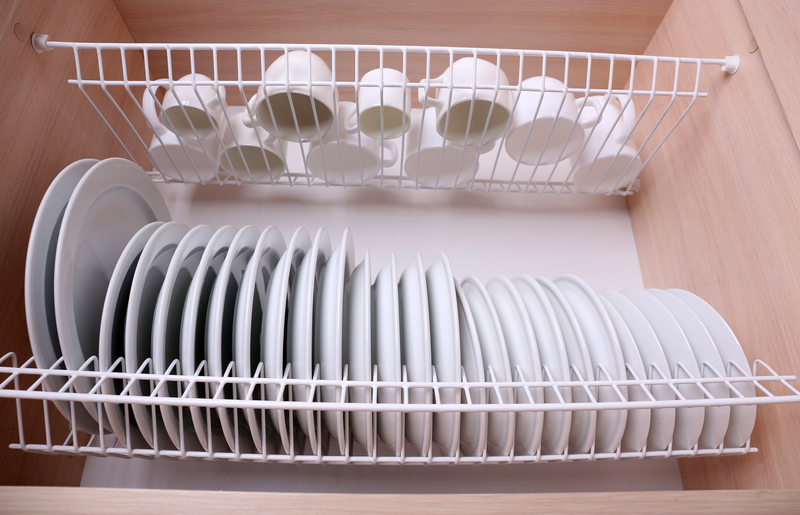Smooth Transitions: End of Tenancy Cleaning for Tenants
Posted on 15/06/2025
Smooth Transitions: End of Tenancy Cleaning for Tenants
Moving out of a rental property marks a significant transition. Whether you're upgrading to a bigger home or relocating for work, ensuring a smooth shift is crucial. End of tenancy cleaning for tenants plays a pivotal role in this process, directly impacting your chances of securing that all-important deposit refund and maintaining a positive relationship with your landlord or letting agency.
In this comprehensive guide, we'll explore every aspect of end of tenancy cleaning, including why it matters, what's expected, and how you can manage the process efficiently. By mastering the art of end of lease cleaning, you'll be able to depart with peace of mind and leave a great impression behind.

Understanding End of Tenancy Cleaning
What Is End of Tenancy Cleaning?
End of tenancy cleaning (also known as move out cleaning or rental exit cleaning) refers to the deep and thorough cleaning of a rented property before a tenant moves out. The main goal is to restore the property to its original, clean state, ensuring it's ready for the next occupant and that it meets the standards specified in the rental agreement.
Typically, this process includes more than standard weekly house cleaning. It involves tackling hard-to-reach areas, removing stubborn stains, and ensuring every nook and cranny is spotless. Given how vital this cleaning is for securing your deposit, tenants must give it the attention it deserves.
Why Is End of Lease Cleaning So Important?
- Deposit Refund: The number one reason tenants undertake exit cleaning is to recover their full deposit. Landlords can withhold part or all of your deposit if cleaning is insufficient.
- Landlord Relationships: Leaving the property in pristine condition leaves a good impression and may result in positive references for future rentals.
- Legal Obligations: Most rental contracts specify the level of cleanliness required at move-out. Failing to meet this can lead to disputes and even legal issues.
- Preparation for New Tenants: A clean property ensures a pleasant environment for the next occupants and demonstrates your respect for communal living standards.
Not meeting the cleaning standards could lead to significant costs or even legal claims, so it pays to invest time and effort in this crucial move-out task.
End of Tenancy Cleaning Checklist
To streamline your efforts and ensure no area is overlooked during your move out cleaning, it's wise to use a comprehensive checklist. Here are the main areas to focus on:
Kitchen Cleaning
- Oven, hob, and extractor fan: Remove all grease and grime from the oven (inside and out), including racks and trays.
- Fridge and freezer: Defrost, clean, and dry thoroughly, removing any residue or spills.
- Cupboards and drawers: Wipe inside and out to remove crumbs and stains.
- Sinks and taps: Limescale removal and polishing.
- Worktops and splashbacks: Scrub surfaces to remove stains and debris.
- Microwave and other appliances: Clean thoroughly inside and out.
- Floors: Sweep, mop, and remove any sticky residue.
Bathroom Cleaning
- Toilets, bathtubs, and showers: Remove limescale, mold, and soap scum.
- Sinks and taps: Polish and ensure there are no water spots.
- Mirrors and glass screens: Clean until streak-free.
- Tiles and grout: Scrub to remove dirt and mildew.
- Floors: Decontaminate and mop.
Bedrooms & Living Areas
- Wardrobes and storage units: Wipe inside and outside.
- Skirting boards, shelves, and picture rails: Dust and polish.
- Windows and sills: Clean inside and, where possible, outside.
- Carpets and hard flooring: Vacuum or steam clean carpets, mop hard floors.
- Light fittings and switches: Wipe and dust thoroughly.
- Doors and handles: Disinfect and clean both sides.
General Areas
- Cobweb removal from ceilings and corners
- Bins: Empty and sanitized
- Fixtures and fittings: Check and clean as required
- Walls: Remove minor marks or scuffs (within reason)
*Note: If the property is furnished, include cleaning of upholstery, curtains, and other soft furnishings.
DIY vs Professional End of Tenancy Cleaning
Should you clean the property yourself or hire a professional cleaning service? The answer depends on several factors, including your time, energy, standards, and the property's size and condition.
DIY End of Tenancy Cleaning
- Cost effective: You save money by doing it yourself, especially if you already have cleaning supplies.
- Control: You can pay extra attention to areas that are most heavily scrutinized by landlords.
- Time-consuming: It can take several hours - sometimes days for larger properties.
- Physical effort: Deep cleaning can be hard work, particularly for those with busy schedules or mobility challenges.
Professional End of Lease Cleaning Services
- Expertise: Professionals know exactly what landlords and agencies expect and have a system to ensure every inch is spotless.
- Time-saving: A skilled team can do a thorough job in a fraction of the time it would take to do it yourself.
- Equipment and products: Professionals come equipped with industrial-grade cleaning products and tools.
- Guarantee: Many reputable companies offer a guarantee, so if the landlord isn't satisfied, they'll redo the service at no extra charge.
- Cost: It will be more expensive, but this investment may protect your deposit and relieve stress during a busy time.
Tip: If you choose to hire a cleaning service, always check reviews, ask for a comprehensive checklist of what's included, and ensure they're insured and certified.
How to Prepare for End of Tenancy Cleaning
*Preparation is key to a successful move-out clean.* Taking the time to plan in advance will ensure you don't miss anything and help streamline the cleaning process.
Steps to Take
- Read your tenancy agreement: Landlords often specify certain cleaning requirements or provide a checklist of standards. Make sure you know exactly what's expected.
- Repair and touch up: Some wear and tear is normal, but fix any damage or issues that exceed this, such as holes in walls, cigarette stains, or broken fixtures.
- Declutter and empty the property: Remove all your belongings and rubbish before you clean. This ensures you can clean every surface effectively.
- Document the condition: Take photos or videos before, during, and after cleaning as evidence of the property's state for future reference.
- Check for specialized cleaning: Some appliances, carpets, or furnishings might need professional attention or steam cleaning.
Remember, landlords and letting agents are likely to inspect every aspect of the property - sometimes using their own inventory clerks. Thoroughness is essential.
Top Tips for an Effective Move-Out Clean
- Start at the top: Dust and dirt fall downwards, so always clean higher surfaces (like shelves and light fixtures) before floors.
- Use quality products: Choose the right cleaning solutions for each job (such as limescale remover for taps and descaler for kettles).
- Don't forget hidden areas: Clean under appliances, behind radiators, and inside cabinets - landlords often check these!
- Ventilate: Open windows for fresh air and to help dry cleaned areas quickly.
- Finish with the floors: Always leave vacuuming and mopping until last, so you're not re-soiling just-cleaned surfaces.
Common Mistakes Tenants Make During End of Tenancy Cleaning
Even the most diligent tenants can overlook certain aspects. Avoid these common pitfalls:
- Ignoring fixtures and fittings: Blinds, curtain rails, light switches, and door handles often accumulate grime.
- Only surface-cleaning appliances: Landlords may check inside ovens, fridges, and washing machines.
- Forgetting outdoor areas: Patios, gardens, and balconies should also be tidy and free from waste.
- Missing professional carpet cleaning clauses: Some contracts require carpets to be steam-cleaned.
- Leaving residue or odours: Pet smells and cooking odours can be grounds for deductions.
- Neglecting windows and mirrors: Streaky glass can detract from the overall cleanliness.
How to Prove Your End of Tenancy Cleaning Was Done Well
To safeguard your deposit and avoid disputes, it helps to document the condition of the property after cleaning. Here's how:
- Take time-stamped photographs and videos of every room, focusing on areas that were previously highlighted in the check-in inventory.
- Ask for a receipt and checklist if you used professional cleaning services. This acts as proof of the cleaning standard.
- Invite your landlord or letting agent to attend a post-clean inspection - this enables you to address any concerns immediately.
- Keep all communication in writing to support your case if there are disputes over cleanliness or deposit deductions.
Being proactive in this way maximizes your chances of a positive outcome at the end of your tenancy.

Frequently Asked Questions About End of Tenancy Cleaning for Tenants
Do I have to do end of tenancy cleaning myself?
Unless your rental agreement specifically requires a professional clean, you can do it yourself. However, if your cleaning doesn't meet the landlord's standards, you may be charged for professional cleaning from your deposit.
How clean is "clean" enough?
Your property should look as it did at check-in, minus normal wear and tear. This means spotless surfaces, fresh-smelling rooms, and no visible dirt, damage, or grime. Review your check-in inventory for guidance.
Can my landlord make deductions for minor issues?
Landlords are entitled to claim for cleaning that goes beyond "normal wear and tear." However, they cannot make unreasonable or excessive deductions. Always address legitimate issues and dispute unfair claims using photographs or inventory reports.
Conclusion: Make Your Move-Out Hassle-Free
- End of tenancy cleaning for tenants is a crucial part of moving out of a rented home. It goes beyond standard tidying and requires systematic attention to every detail.
- The key benefits are protecting your deposit, maintaining a strong relationship with your landlord, and ensuring a stress-free move-out experience.
- Preparation and thoroughness help you avoid conflicts and speed up the check-out process. Whether you DIY or hire professionals, follow a comprehensive checklist and document your results for peace of mind.
- Remember: A clean exit sets you up for a smooth transition to your next home - and enhances your reputation as a responsible tenant.
*For more end of tenancy cleaning tips or to find professional move-out cleaners in your area, don't hesitate to reach out to local experts. A smooth transition starts with a spotless farewell!*





